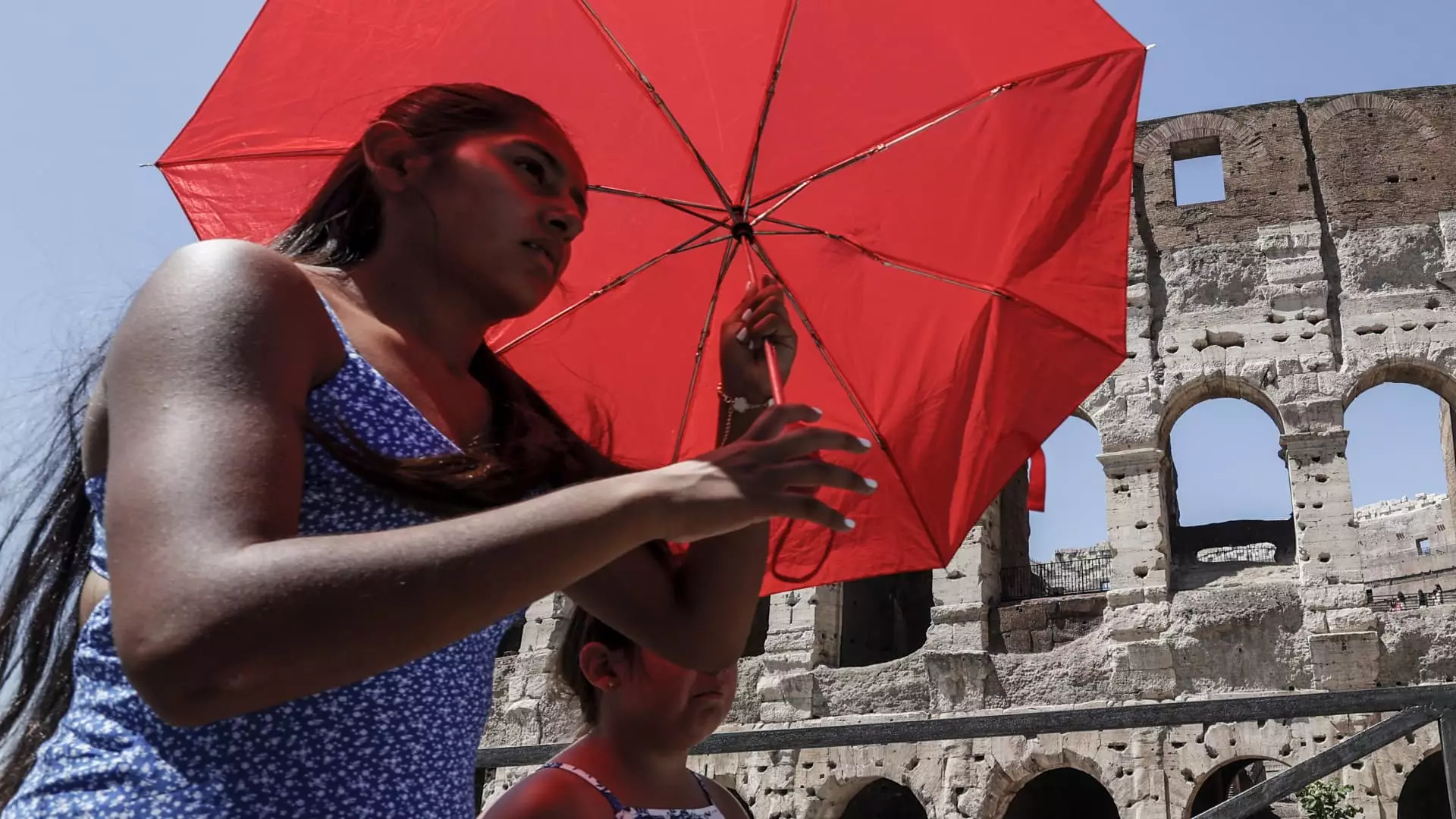As global warming continues to make headlines, its impact on tourism, particularly in Europe, cannot be overlooked. This summer has marked a significant shift in travel behaviors, as soaring temperatures and overcrowded hotspots have compelled holidaymakers to rethink their vacation plans. European destinations, which previously thrived during the bright summer months of July and August, are now witnessing a decline in tourist numbers. Instead, preferences are shifting towards the cooler, more pleasurable months of September and October, a trend emphasized by industry experts and airline officials alike.
Glen Hauenstein, president of Delta Air Lines, highlighted this phenomenon, indicating that travelers are deliberately opting out of the peak summer season to escape the oppressive heat and bustling crowds that often characterize European summers. With climate data confirming that this summer was the hottest on record, it’s clear that environmental changes are reshaping the landscape of vacationing, prompting many to seek alternatives in milder climates.
Interestingly, corporate travel does not appear to follow the same trend as leisure travel. Although it remains steady year-over-year, there is a noted shift in timing, with business trips moving from the peak summer months into the more temperate fall season. This evolution in corporate travel suggests a broader acknowledgment of changing weather trends and a desire for more comfortable experiences, which could have long-term implications on business operations and planning.
In response to these shifting travel habits, airlines are adapting their schedules accordingly. Patrick Quayle, United Airlines’ senior vice president, noted that the airline is extending its European routes into the early spring and late fall months to accommodate the changing patterns. This move not only serves to diversify travel options but also offers travelers improved value and, crucially, more enjoyable weather conditions.
As travelers increasingly gravitate towards shoulder seasons, airlines may experience a renaissance in route planning, as they innovate to meet consumer desires. The summer traveler’s retreat from Europe could lead to more competitive pricing and enhanced services during historically quieter months. This shift creates an interesting dynamic where both airlines and travelers stand to benefit.
The implications of these changes extend beyond just travel logistics; they signal a significant transformation in how vacations are planned and experienced. As tourism boards and local businesses prepare for the influx of visitors during the fall months, they will likely need to invest in marketing these off-peak times, thus redefining the tourist experience in Europe.
Ultimately, as climate factors increasingly become a vital consideration in travel decision-making, the industry must remain adaptable. These trends may not only reflect a temporary shift but could signify a long-term change in travel behavior that demands new strategies to align with evolving preferences. The future of European tourism seems poised for transformation, focusing on sustainability, comfort, and the growing desire to travel without the burden of heat and crowds.


Napsat komentář